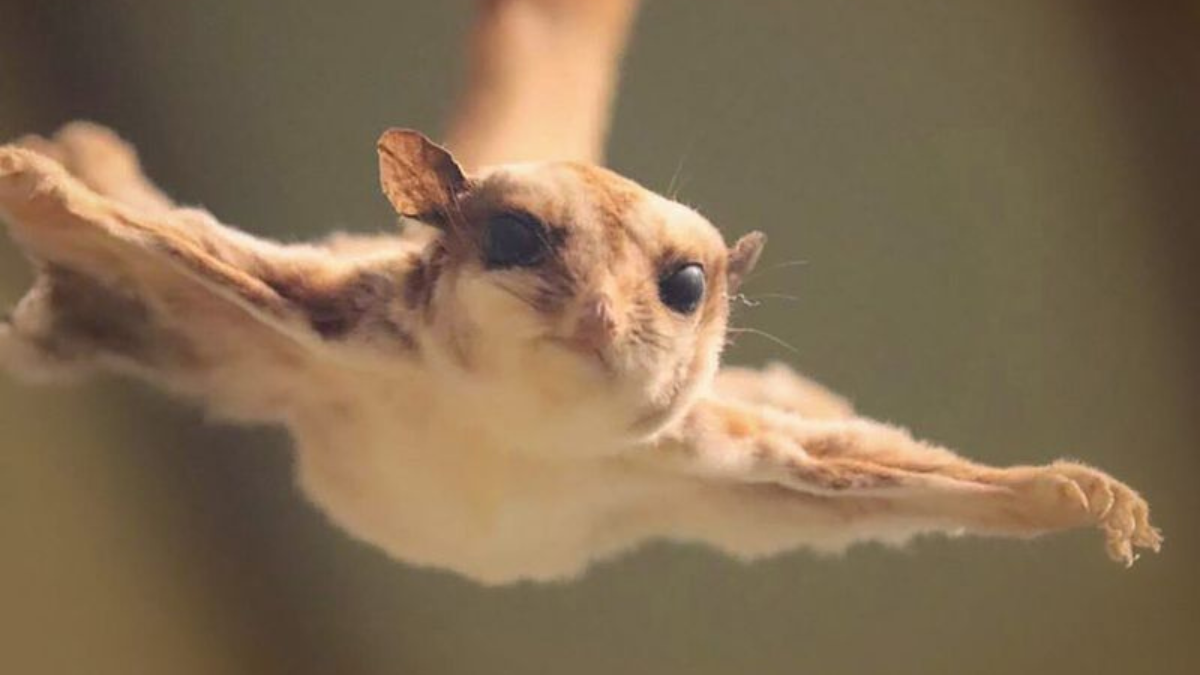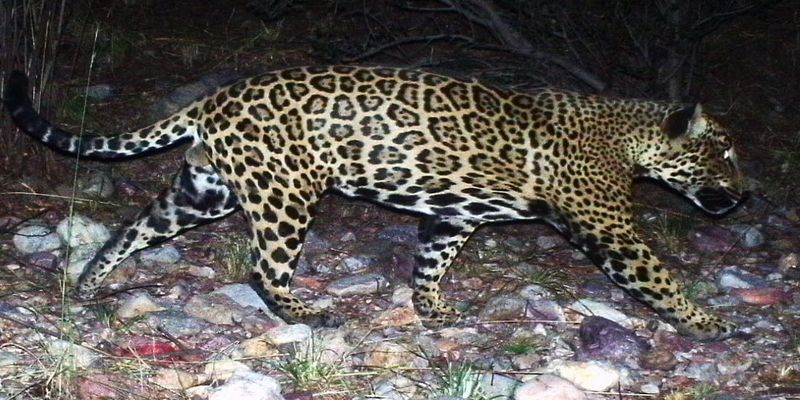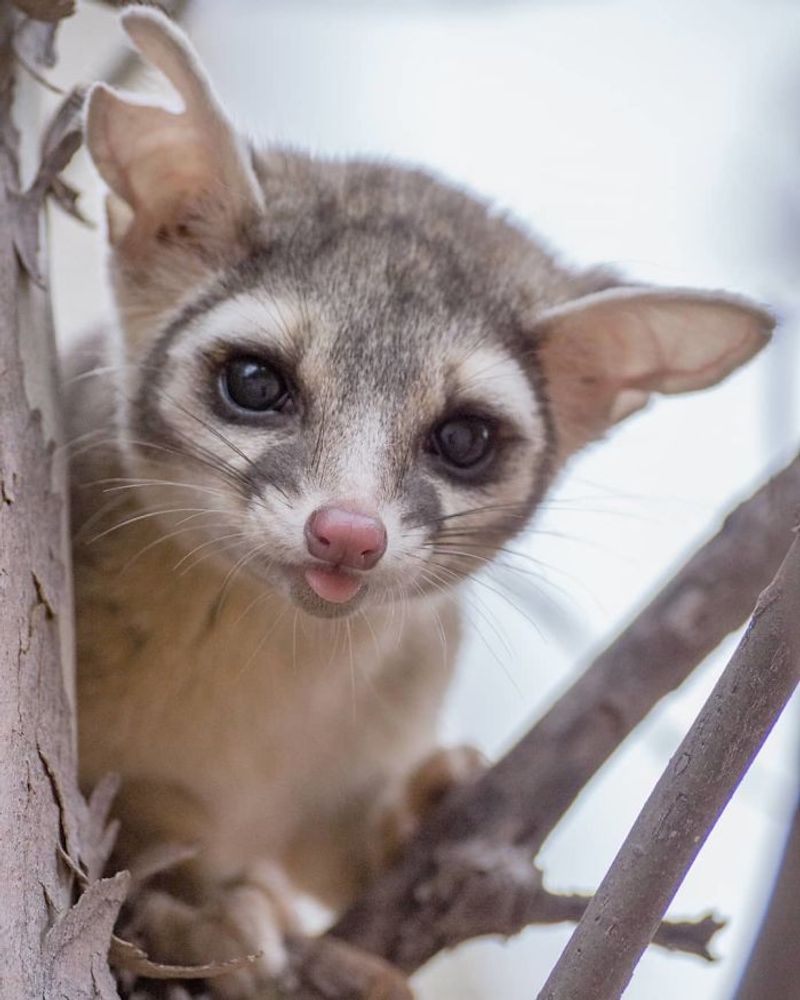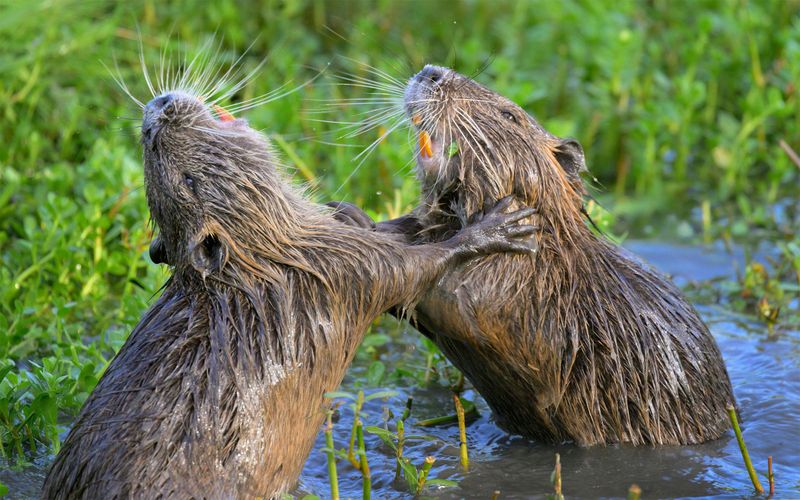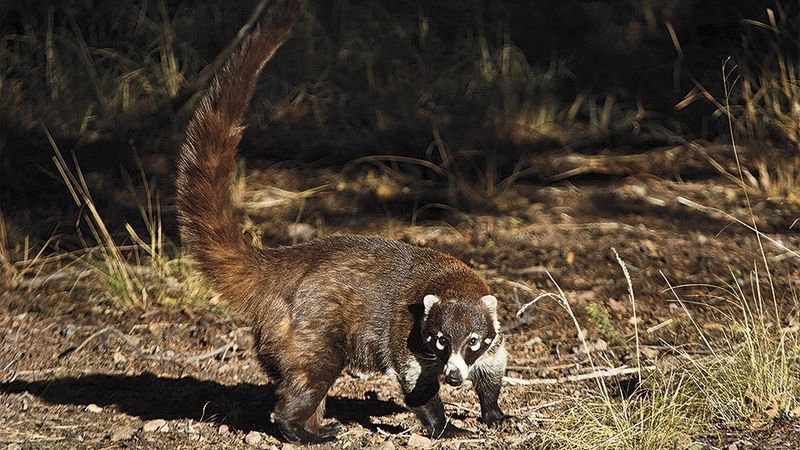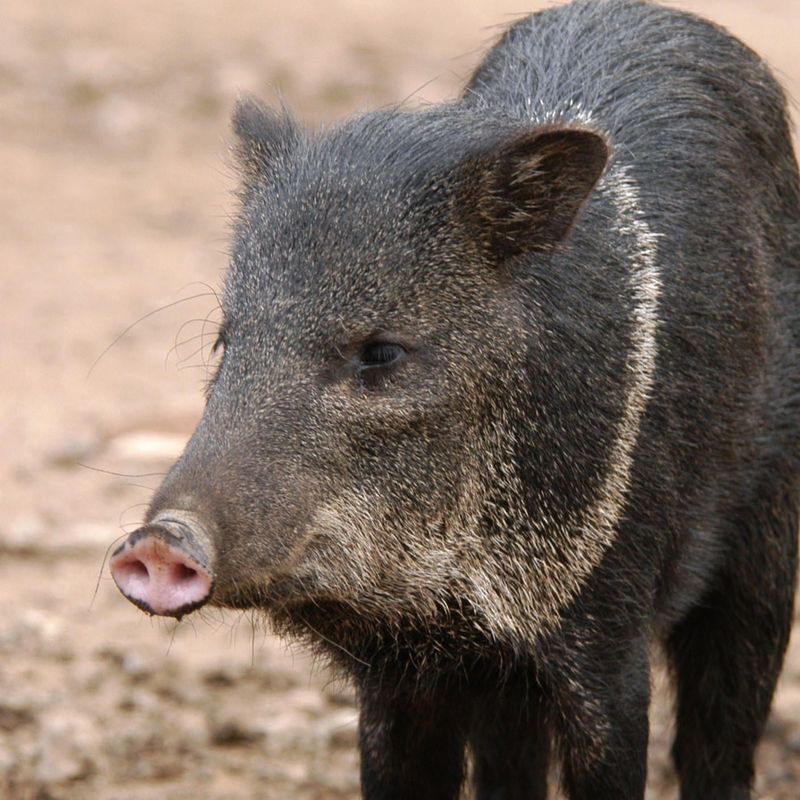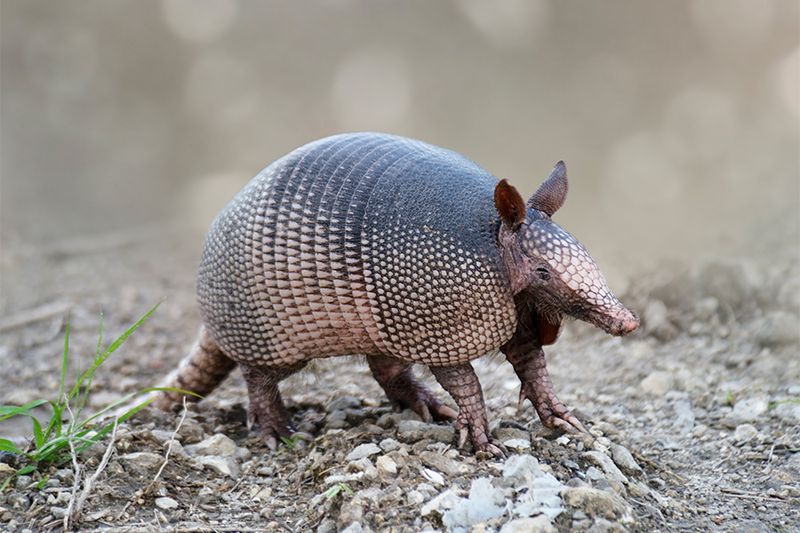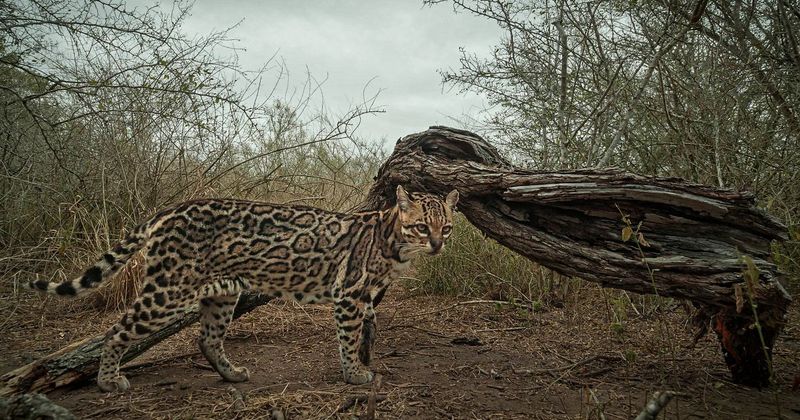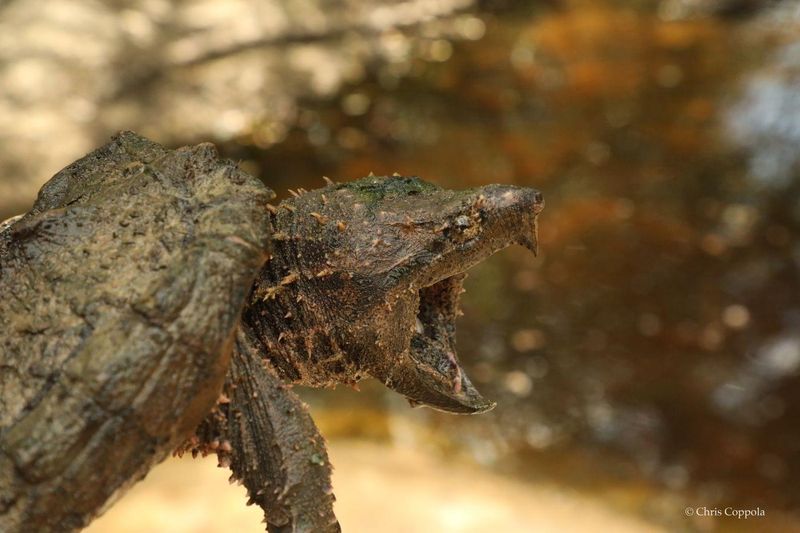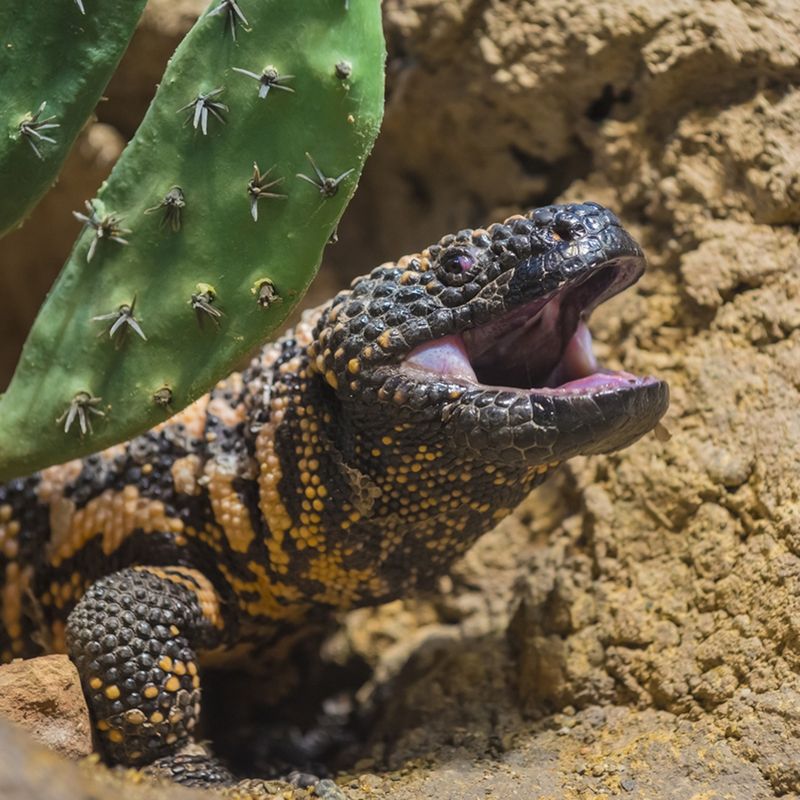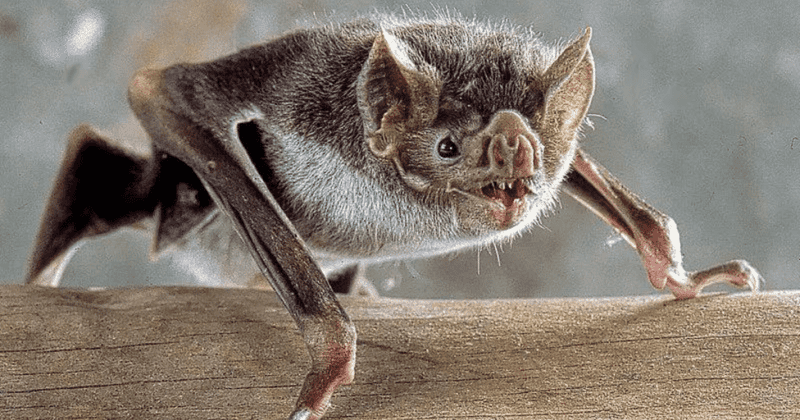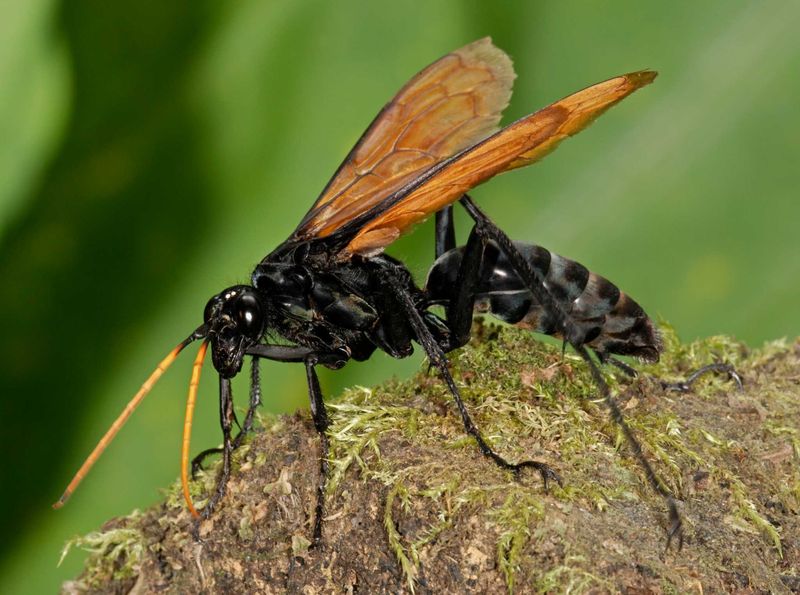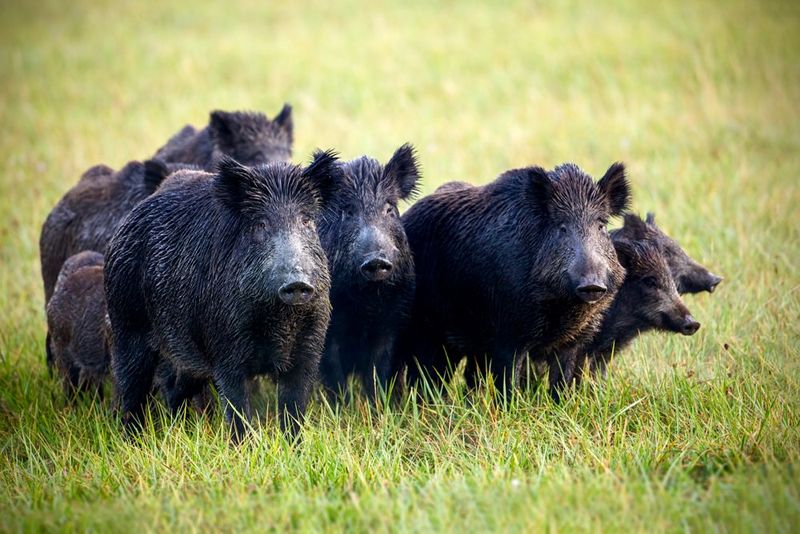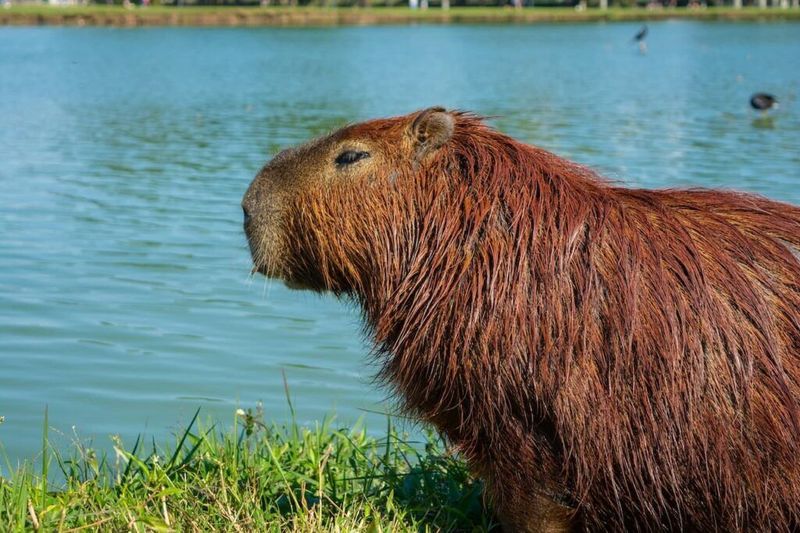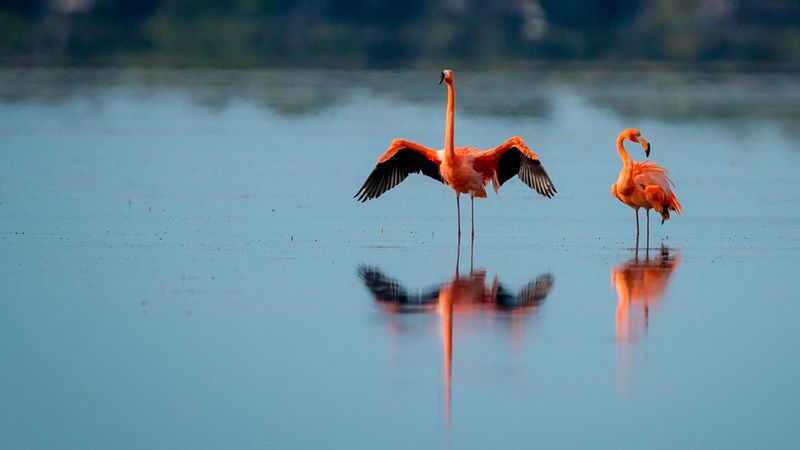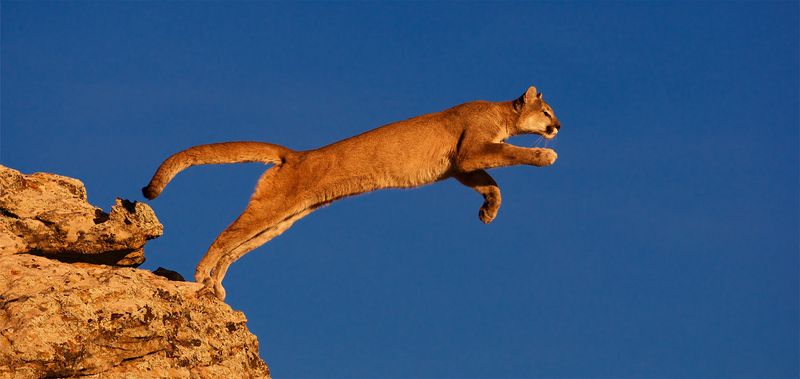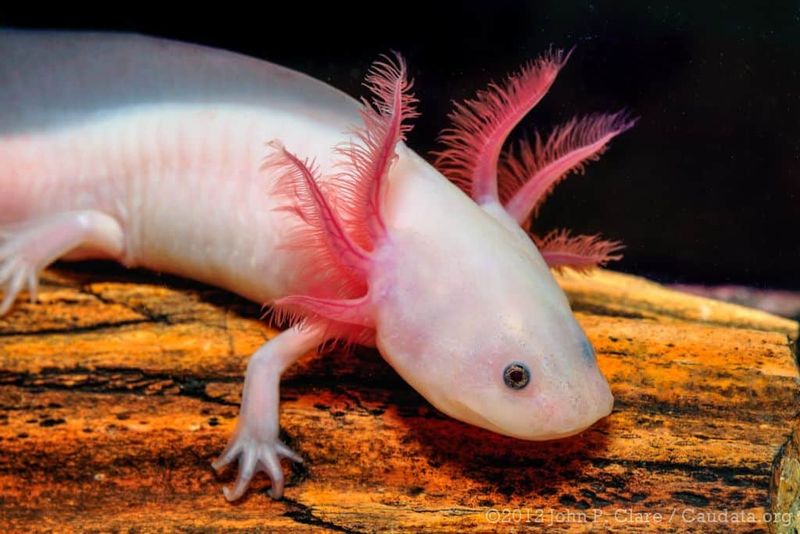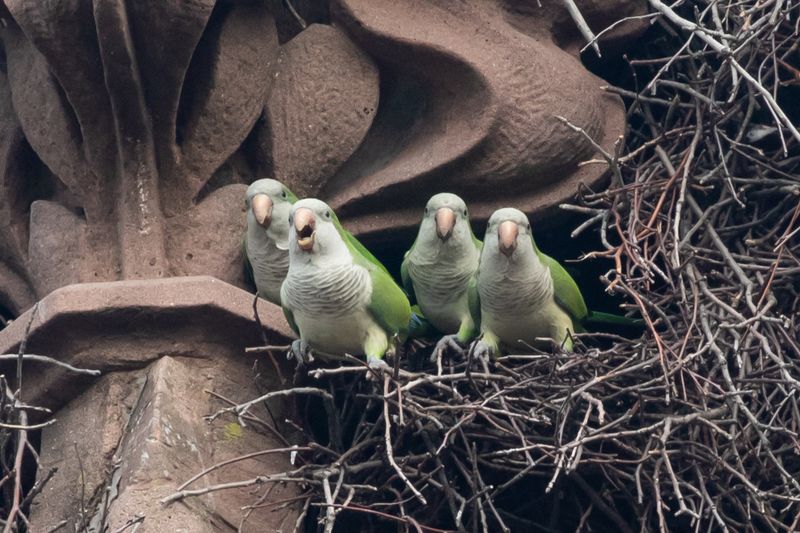📖 Table of Content:
- 1. Jaguars
- 2. Ringtails
- 3. Nutria
- 4. Coatimundis
- 5. Collared Peccaries
- 6. Armadillos
- 7. Ocelots
- 8. American Crocodiles
- 9. Alligator Snapping Turtles
- 10. Gila Monsters
- 11. Flying Squirrels
- 12. Vampire Bats
- 13. Tarantula Hawks
- 14. Wild Boars
- 15. Capybaras
- 16. Sonoran Desert Toads
- 17. American Flamingos
- 18. Mountain Lions
- 19. Axolotls
- 20. Monk Parakeets
America’s natural landscapes are home to more than just the usual forest and field dwellers. Tucked within its mountains, swamps, and suburban edges are creatures that seem far more exotic than expected. These animals thrive quietly, often unnoticed by the people who live nearby.
Some of these species are native but rare, while others arrived through human introduction or accidental release. Their presence challenges common ideas about what belongs in the American wilderness. Whether slinking through shadows or hiding in plain sight, they remain largely overlooked.
From stealthy predators to unusual invaders, these animals have adapted to life in regions that might seem unlikely for them. Their stories highlight the complexity and unpredictability of modern ecosystems. Even the most familiar backyards can harbor wildlife that surprises and fascinates.
1. Jaguars
The largest cat in the Americas occasionally roams the southwestern United States. These powerful predators primarily inhabit Central and South America, but small numbers venture into Arizona and New Mexico wilderness areas. Male jaguars can weigh up to 250 pounds with distinctive rosette-patterned coats that help them blend into forest shadows. Unlike many cats, jaguars are excellent swimmers and often live near water sources. Conservation efforts focus on protecting their travel corridors between Mexico and the U.S. Once nearly eliminated from American territory, these magnificent cats are slowly reclaiming small portions of their historic range in the Southwest.
2. Ringtails
Often called “ringtail cats,” these adorable creatures aren’t cats at all but belong to the raccoon family. With fox-like faces, large eyes, and incredibly long striped tails, ringtails are nocturnal mammals that inhabit rocky areas across the southwestern states. Their amazing acrobatic abilities allow them to rotate their ankles 180 degrees, making them exceptional climbers. Ringtails can run along vertical walls and make hairpin turns while descending head-first down tree trunks. Early miners and settlers kept ringtails as pets to control rodents, earning them the nickname “miner’s cat.” Despite living throughout the Southwest, most Americans have never seen one due to their secretive nighttime habits.
3. Nutria
These large, semi-aquatic rodents look like a cross between a beaver and a rat. Native to South America, nutria were introduced to the U.S. for fur farming in the 1930s but escaped or were released, establishing wild populations primarily in Gulf Coast states. Growing up to 20 pounds, nutria have orange front teeth, webbed hind feet, and rat-like tails. They’re prolific breeders, with females producing up to 13 offspring annually, creating serious ecological problems. Nutria destroy wetlands by consuming plant roots that hold soil together, contributing to coastal erosion. Louisiana and other states have bounty programs encouraging hunters to help control these destructive invasive animals that threaten native wildlife and habitat.
4. Coatimundis
Related to raccoons, these long-nosed mammals sport ringed tails and raccoon-like masks. Coatimundis (often called coatis) primarily live in Mexico and Central America, but established populations exist in southern Arizona and New Mexico. Unlike their raccoon cousins, coatis are active during daylight hours. They travel in bands of up to 20 females and young, using their flexible snouts to root through soil for insects, fruits, and small vertebrates. Male coatis live alone except during breeding season. Their long, upright tails serve as communication flags to keep group members together while foraging. Though relatively common in parts of Arizona, many Americans remain unaware these tropical-looking creatures inhabit U.S. territory.
5. Collared Peccaries
Commonly called javelinas, these pig-like mammals roam the southwestern United States. Despite resembling pigs, peccaries belong to an entirely different family that evolved separately in the Americas. Traveling in groups of 8-12 individuals, javelinas have distinctive white collars around their necks and sharp tusks. They communicate through various sounds and rely on a musk gland on their backs to mark territory and identify group members. Highly adaptable, javelinas thrive in desert environments by consuming prickly pear cactus pads, roots, and fruits. Their specialized digestive systems process plants too thorny or tough for other animals. Though common in Arizona and Texas, many Americans don’t realize these unique creatures aren’t actually wild pigs.
6. Armadillos
The nine-banded armadillo has steadily expanded its territory northward from Mexico and Texas. Now found throughout the southeastern United States and pushing as far north as Missouri and Kansas, these armored mammals continue their surprising migration. Covered in bony plates, armadillos are the only mammals wearing shells. They’re prolific diggers, using powerful claws to create burrows and hunt for insects and grubs. An unusual reproductive trait makes them even more remarkable – females always give birth to identical quadruplets. Despite their tough appearance, armadillos are actually quite vulnerable. When startled, they often jump straight up—a defense mechanism that unfortunately makes them frequent victims of vehicle collisions. Their northward expansion continues to surprise residents who discover these prehistoric-looking creatures in their yards.
7. Ocelots
These stunning spotted wild cats cling to existence in the United States with fewer than 50 individuals remaining in southern Texas. Slightly larger than house cats but smaller than bobcats, ocelots are nocturnal hunters with distinctive chain-like markings on their golden fur. Each ocelot’s coat pattern is unique, like a fingerprint. They primarily hunt rabbits, rodents, birds, and small reptiles, using their excellent night vision and hearing to locate prey in the darkness. Habitat loss represents their greatest threat in the U.S. Conservation efforts focus on protecting the dense thornscrub vegetation they require for hunting and raising young. Most Americans have no idea these exotic-looking felines are native to the United States, albeit barely holding on in a tiny portion of Texas.
8. American Crocodiles
While alligators get all the attention, genuine crocodiles also call America home. The American crocodile inhabits the southern tip of Florida, the only place in the United States where crocodiles and alligators coexist naturally. Distinguishable by their narrower snouts and visible lower teeth when their mouths are closed, American crocodiles generally grow 10-13 feet long. They prefer saltwater environments like coastal mangrove swamps and brackish water estuaries, unlike alligators that primarily inhabit freshwater. Once endangered with fewer than 300 individuals in Florida, conservation efforts have helped their population rebound to over 2,000. Still, most Americans remain unaware that authentic crocodiles—not just alligators—live within U.S. borders.
9. Alligator Snapping Turtles
North America’s largest freshwater turtle lurks in rivers and lakes across the southeastern United States. With prehistoric-looking shells covered in ridges and spikes, these ancient reptiles can weigh over 200 pounds and live more than 100 years. Their most fascinating feature is a worm-like appendage on their tongue. When an alligator snapping turtle opens its mouth underwater, this pink lure wiggles to attract fish. When prey investigates, powerful jaws snap shut with bone-crushing force. Unlike most turtles, these giants rarely leave the water except when females lay eggs. They spend much of their lives walking along river and lake bottoms or lying motionless, camouflaged by algae growth on their shells while waiting for prey to approach.
10. Gila Monsters
As one of only two venomous lizards in the world, Gila monsters bring prehistoric drama to American deserts. These heavy-bodied reptiles with black and orange/pink bead-like scales inhabit the Sonoran, Mojave, and Chihuahuan deserts of the southwestern United States. Unlike venomous snakes that strike quickly, Gila monsters deliver venom through a chewing motion with grooved teeth in their lower jaw. They spend up to 95% of their lives underground, emerging mainly during the spring breeding season. Fascinatingly, Gila monster venom contains a compound that led to developing a medication for type 2 diabetes. Though potentially dangerous if provoked, these lizards move slowly and rarely bite humans unless handled or threatened.
11. Flying Squirrels
Northern flying squirrels glide through forests across the northern United States, while southern flying squirrels inhabit eastern woodlands. Despite their name, these nocturnal mammals don’t truly fly but glide using a furry membrane called a patagium that stretches between their front and back legs. By launching from high points and extending their limbs, flying squirrels can glide over 150 feet, steering with their flattened tails. Large eyes give them excellent night vision for navigating forests after dark. Most Americans have never seen these charming creatures because they’re strictly nocturnal. Flying squirrels are also the only squirrels active during winter nights, when they’ll huddle together in tree cavities to stay warm, sometimes in groups of over a dozen individuals.
12. Vampire Bats
Common vampire bats occasionally venture into the southernmost tip of Texas, though their primary range lies in Mexico and Central America. These small mammals are the only bats that feed exclusively on blood, primarily from livestock and wild mammals. Using heat sensors in their noses, vampire bats locate blood vessels near an animal’s skin. Their razor-sharp teeth create a small incision, and anticoagulant saliva keeps blood flowing while they lap it up. A single feeding typically takes about 30 minutes. Despite their fearsome reputation, vampire bats are highly social creatures that share food with hungry colony members. Their blood-feeding habits have led to important medical discoveries, including anticoagulant medications used to treat stroke patients.
13. Tarantula Hawks
These massive wasps deliver one of the most painful insect stings in the world. Common across the southwestern United States, tarantula hawks aren’t actually hawks but wasps with metallic blue-black bodies and rusty orange wings that can grow over 2 inches long. Their name comes from their hunting behavior—female wasps sting and paralyze tarantulas, then drag them to a burrow where they lay a single egg on the spider. When the larva hatches, it feeds on the still-living tarantula, carefully avoiding vital organs to keep its food supply fresh. The pain from their sting is described as “instantaneous, excruciating, and unrelenting,” rated second highest on the Schmidt Pain Index. Fortunately, these wasps are non-aggressive toward humans unless handled or stepped on barefoot.
14. Wild Boars
Feral hogs run wild across at least 35 states, causing billions in agricultural damage annually. Descended from escaped domestic pigs and introduced European wild boars, these highly intelligent mammals have become one of America’s most destructive invasive species. Adult males (boars) can exceed 400 pounds and grow razor-sharp tusks up to 5 inches long. Females produce up to 12 piglets twice yearly, allowing populations to explode. Their incredible adaptability lets them thrive in environments ranging from swamps to mountains. Wild boars destroy native vegetation by rooting through the soil with their powerful snouts. They eat almost anything—crops, reptiles, amphibians, ground-nesting birds, and even fawns. Despite extensive hunting programs, their numbers continue to increase across the country.
15. Capybaras
The world’s largest rodents have established small populations in Florida, primarily in the central and southern regions. Native to South America, these semi-aquatic mammals resemble giant guinea pigs with barrel-shaped bodies and can weigh over 100 pounds. Excellent swimmers, capybaras have partially webbed feet and can remain submerged for up to five minutes. They typically live near water bodies, grazing on aquatic plants and grasses. Their eyes, ears, and nostrils sit high on their heads, allowing them to stay mostly submerged while remaining alert. Florida’s capybaras likely originated from escaped exotic pets or private collections. Though not yet widespread, their presence showcases how non-native species can establish themselves in suitable American habitats, often flying under the radar of public awareness.
16. Sonoran Desert Toads
North America’s largest native toad hops through desert regions of Arizona, New Mexico, and parts of California. Growing up to 7.5 inches long, these massive amphibians were formerly called Colorado River toads and are recognizable by their smooth, olive-green skin. When threatened, Sonoran Desert toads secrete a potent toxin from glands behind their eyes and on their legs. This defense mechanism can be deadly to predators and pets, particularly dogs that might attempt to bite or lick them. These toads spend most of the year underground in a dormant state, emerging during summer monsoon rains to breed in temporary pools. Their distinctive call—a low-pitched toot lasting up to 20 seconds—fills desert nights during their brief active period.
17. American Flamingos
Wild flamingos occasionally appear in Florida, surprising many who assume these iconic pink birds are only found in zoos or tropical destinations. While not widespread, small numbers of American flamingos visit Florida Bay and the Everglades, especially after storms push them north from Caribbean breeding grounds. Scientists debate whether Florida’s flamingos are truly wild or descended from escaped captive birds. Historical records suggest they were once native before being hunted to local extinction in the late 1800s for their feathers and meat. Recent sightings of banded birds from Mexico and the Bahamas confirm at least some wild flamingos naturally visit Florida. Regardless of their origin, seeing these distinctive birds in U.S. wetlands provides a surprising tropical touch to America’s wildlife.
18. Mountain Lions
Also called cougars or pumas, these powerful cats have a far broader range across the United States than most people realize. While strongly associated with western mountains, mountain lions have been confirmed in midwestern and eastern states, including Nebraska, Missouri, Arkansas, and even Connecticut. As North America’s largest cat after jaguars, adult males can weigh up to 200 pounds and measure over 8 feet from nose to tail tip. These solitary ambush predators maintain enormous territories—up to 370 square miles for males. Mountain lions are masters of stealth, often living near human populations without being detected. Their incredible jumping ability allows them to leap 15 feet high or 40 feet horizontally. Despite their size and power, confirmed attacks on humans remain extremely rare.
19. Axolotls
These remarkable salamanders maintain juvenile features throughout their lives, a phenomenon called neoteny. While primarily associated with Mexico, small populations of wild axolotls have been discovered in isolated springs and ponds in parts of Colorado and New Mexico. Axolotls never lose their external gills, which appear as feathery branches protruding from behind their heads. Perhaps their most extraordinary ability is regenerating entire lost limbs, portions of vital organs, and even parts of their brain and heart. Their regenerative capabilities make axolotls valuable research subjects for scientists studying tissue regeneration and aging. Though widely bred in captivity as pets and laboratory animals, wild axolotls face extinction threats from habitat loss, pollution, and introduced predatory fish.
20. Monk Parakeets
Bright green parrots squawk through city skies across America, establishing wild colonies in over 20 states. Native to South America, monk parakeets (also called Quaker parrots) escaped from the pet trade in the 1960s and have thrived, particularly in urban areas from New York to Texas to Illinois. Unlike most parrots, monk parakeets build massive communal stick nests on utility poles, cell towers, and stadium lights. A single structure can house dozens of breeding pairs and weigh several tons, sometimes causing power outages or fire hazards. These adaptable birds survive northern winters by huddling together in their insulated nests. Their intelligence, vocal abilities, and social nature have helped them succeed far beyond their native range, creating colorful but controversial additions to America’s urban wildlife.
